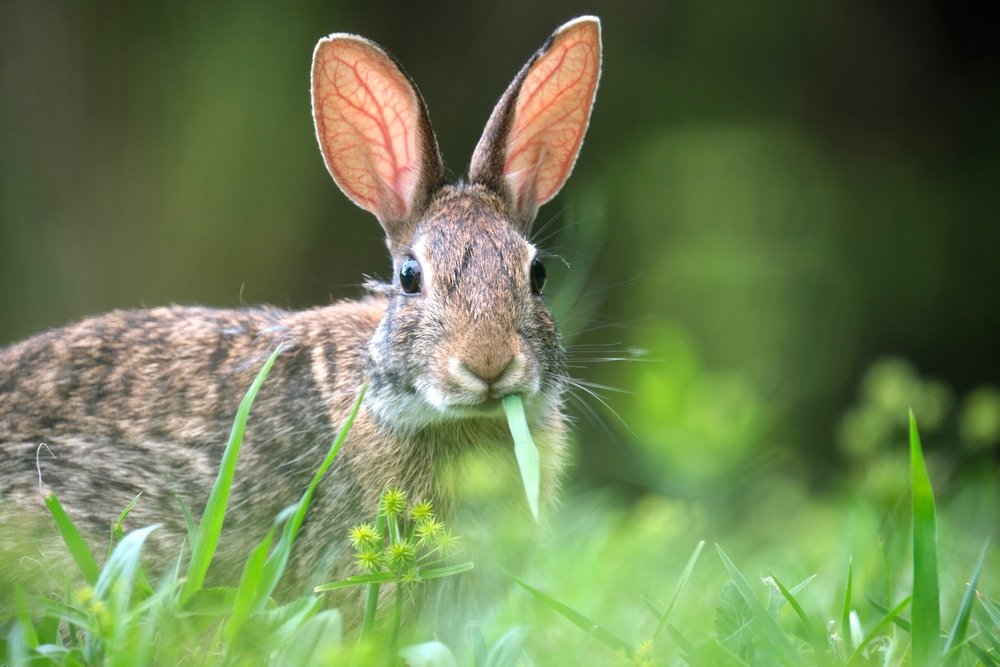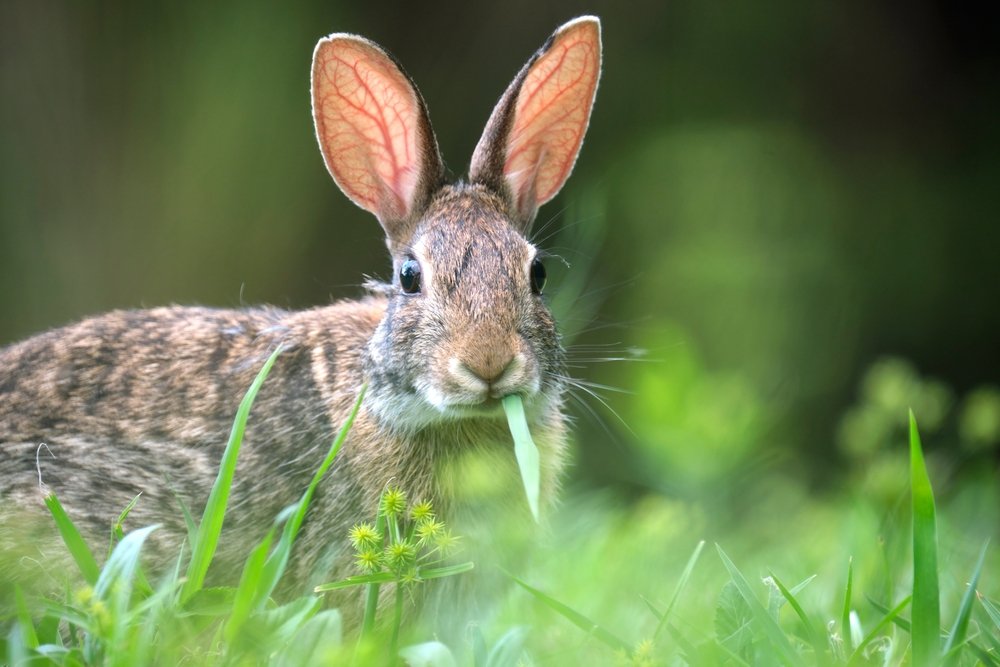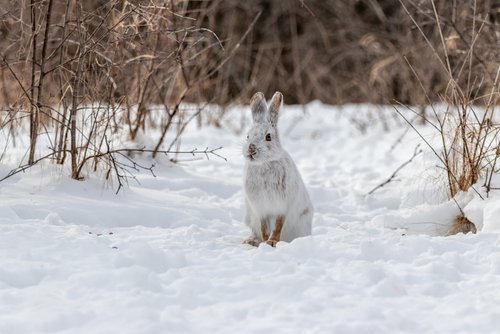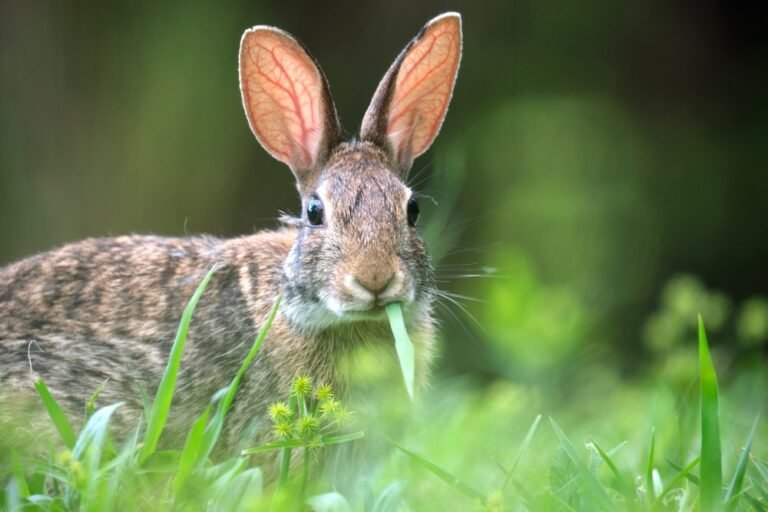Rabbit Hunting Laws and Regulations: What You Need to Know
Hunting laws and regulations play a pivotal role in governing the practice of rabbit hunting. These guidelines are designed to ensure ethical conduct, protect wildlife populations, and preserve habitats. By implementing standardized rules across federal agencies and individual states, regulatory bodies seek to strike a delicate balance between conservation efforts and promoting sustainable recreational activities.
One cannot underestimate these laws’ vital role in safeguarding both human participants and animal species. They govern aspects such as permissible seasons for hunting different species of rabbits, bag limits (the maximum number that can be taken), licensing requirements for hunters, restrictions on weaponry used during hunts (including firearms or archery equipment), as well as conservation measures aimed at protecting habitats critical to rabbit populations.
Understanding rabbit hunting laws and regulations is essential for every responsible hunter engaged in this challenging yet rewarding pursuit. It ensures the ethical treatment of wildlife and contributes to the preservation of ecosystems and biodiversity.
To delve deeper into this subject matter and stay updated on any changes or amendments, enthusiasts can consult the official websites of relevant wildlife departments, hunting organizations, or publications dedicated to outdoor activities. By adhering to these guidelines and embracing the principles they uphold, hunters can enjoy a fulfilling experience while participating in this timeless tradition.
Overview of Rabbit Hunting Laws and Regulations
Federal regulations
Regarding rabbit hunting, there are state-specific regulations to consider and federal laws that play a vital role in ensuring the proper management and conservation of wildlife. The U.S. Fish and Wildlife Service (USFWS) is one important agency that enforces these federal regulations.
The USFWS oversees the protection of migratory birds and their habitats, which also indirectly affects rabbit hunting. Although rabbits are not considered migratory birds, they may be impacted by certain provisions under the Migratory Bird Treaty Act (MBTA) enforced by the USFWS.
Migratory Bird Treaty Act and its impact on rabbit hunting
The Migratory Bird Treaty Act is a critical piece of legislation that protects over 800 species of migratory birds in North America. While rabbits are not classified as migratory birds, indirect effects can still be observed in rabbit hunting due to this act.
For example, certain restrictions on firearms or ammunition set forth by the MBTA may apply to all hunting activities within its jurisdiction, including rabbit hunting. Hunters must familiarize themselves with these provisions to ensure compliance with federal law.
State regulations
In addition to federal laws, each state has specific rabbit hunting regulations. One aspect where states exercise their authority is establishing variations in hunting seasons and bag limits.
These variations aim to align with local ecological factors such as population dynamics and breeding cycles specific to each region. Therefore, hunters must consult state-specific resources or contact wildlife management agencies for accurate information regarding season dates and bag limits before embarking on a rabbit hunting expedition.
Licensing requirements for rabbit hunters
Apart from seasonal variations, the licensing requirements for rabbit hunters are another area where states differ in their regulations. States may have different regulations regarding the licenses, permits, or stamps to hunt rabbits legally. Some states may require a general hunting license, while others may have specific small-game or furbearer licenses that cover rabbit hunting.
Hunters must be aware of these requirements and possess the appropriate licenses before engaging in rabbit hunting activities. Consulting state fish and wildlife agencies’ websites or handbooks can provide precise information on licensing prerequisites.
Understanding federal regulations enforced by the USFWS and state-specific laws is crucial to ensure compliance with all applicable rabbit hunting rules. For more comprehensive information on where to learn more about rabbit hunting laws and regulations specific to your location, it is recommended to visit official wildlife management agency websites or refer to state-issued hunting handbooks that provide detailed guidelines for legal and ethical rabbit hunting practices.

Rabbit Species and Their Legal Status for Hunting
Cottontail rabbits (Sylvilagus spp.)
When venturing into rabbit hunting, one cannot overlook the significance of cottontail rabbits. These small, elusive creatures belong to the Sylvilagus genus, which comprises various species across different regions. Cottontails are characterized by their short ears and a distinctive white underside tail resembling a fluffy cotton ball.
The legal status of hunting cottontail rabbits varies from region to region, as different jurisdictions have specific regulations. Those passionate about pursuing this particular species must consult local wildlife management agencies or relevant authorities for up-to-date information on hunting seasons, bag limits, and any applicable restrictions.
Snowshoe hare (Lepus americanus)
The snowshoe hare, scientifically known as Lepus americanus, presents an intriguing twist in rabbit hunting. While it shares characteristics with cottontails—such as their herbivorous diet and stringent late-night habits—the snowshoe hare possesses unique features that set it apart.
One distinguishing feature is its larger size compared to most cottontails. The snowshoe hare also boasts distinctive fur coloration that changes seasonally to provide optimal camouflage against its surroundings.
During winter, its coat shifts from brown or grayish-brown to pure white—a remarkable adaptation known as “winter white.” This transformation enables the hare to blend seamlessly into snowy landscapes. Governing bodies typically establish specific regulations for snowshoe hare hunting due to its ecological significance and conservation concerns surrounding its population stability.
These regulations may include restrictions on the number of hares hunters can pursue per day or during an entire season. For those who wish to learn more about rabbit hunting laws and regulations, consulting state wildlife agency websites and hunting guides or engaging with local hunting associations can provide valuable information on the legal status of both cottontail rabbits and snowshoe hares in their respective regions.
Hunting Methods, Equipment, and Restrictions
Traditional methods used in rabbit hunting
Rabbit hunting, as an age-old tradition, has its fair share of tried-and-true techniques. Among these practices, using beagles as scent hounds is a popular and effective method for tracking rabbits.
Beagles possess an exceptional sense of smell and an innate ability to sniff out the elusive scent trails left by rabbits. Their compact size allows them to navigate dense brush easily, making them ideal companions for hunters in pursuit of cottontail rabbits.
Another method worth mentioning is the spot-and-stalk technique employed specifically for snowshoe hare hunting. This technique requires hunters to patiently spot hares from a distance before skillfully closing in for a successful harvest.
Firearms, ammunition, and archery equipment are allowed during rabbit hunts.
Regarding firearms used for rabbit hunting, shotguns are the weapon of choice for many hunters due to their versatility and effectiveness at close ranges. However, it is important to note that specific state regulations may impose gauge restrictions on shotguns. These restrictions aim to ensure ethical hunting practices while minimizing unnecessary harm or damage caused by excessive firepower.
Apart from shotguns, archery enthusiasts can also partake in rabbit hunting using bows and arrows that meet certain minimum draw weight requirements established by local governing bodies. In terms of ammunition selection for shotgun users targeting rabbits, smaller shot sizes such as #6 or #7 1/2 are commonly favored due to their ability to bag games effectively without causing excessive damage or waste.
This encourages responsible harvesting while promoting conservation efforts. To gain deeper insights into specific regulations regarding firearms and archery equipment permitted during rabbit hunts within your jurisdiction or desired destination, consult official sources such as state wildlife agency websites or local hunting regulations handbooks.
Overall, understanding the traditional hunting methods and equipment allowed for rabbit hunts is essential to ensuring compliance with existing laws and regulations. By adhering to these guidelines, hunters can enjoy a fulfilling and rewarding experience while actively contributing to the conservation of rabbit populations and their habitats.
Seasonal Considerations
Different seasons for cottontail rabbits vs snowshoe hares
When it comes to rabbit hunting, understanding the different hunting seasons for cottontail rabbits and snowshoe hares is crucial. These species’ distinct habitats, behaviors, and reproductive patterns influence their respective hunting seasons.
Generally, the hunting season for cottontail rabbits spans from early fall to late winter, aligning with when these rabbits are most active and abundant. On the other hand, snowshoe hare hunting typically takes place during winter months when their fur has changed to white in response to seasonal camouflage needs.
The specific dates for these seasons can vary between states due to regional differences in weather conditions and population dynamics. Therefore, hunters must acquaint themselves with local regulations regarding these seasonal variations.
Factors influencing peak hunting times
Several factors that impact their behavior and availability can influence peak hunting times for both cottontail rabbits and snowshoe hares. One important factor is the breeding season of these species. Cottontails tend to breed throughout the year but experience a peak breeding period in the spring and summer months.
This means that during this time, hunters may encounter more rabbits actively searching for mates or defending territories, making them relatively easier targets. Snowshoe hares also have a breeding season in late winter or early spring, when they become more active and visible compared to other times.
Moreover, weather conditions also play a significant role in determining peak hunting times. For instance, rain showers or periods of high humidity can prompt increased rabbit activity as they come out of their burrows seeking food or mates.
Additionally, colder temperatures often lead to more active rabbit behavior as they venture out further from cover, looking for food sources. To optimize their success during peak hunting times, hunters should stay informed about local weather patterns and adapt their hunting strategies accordingly.
By paying attention to breeding seasons and environmental influences, hunters can plan their outings more effectively and increase their chances of a fruitful hunt. Understanding the different seasons for hunting cottontail rabbits and snowshoe hares and the factors influencing peak hunting times is crucial for any aspiring rabbit hunter.
By adhering to the relevant laws and regulations governing these hunting seasons, hunters can participate responsibly while enjoying a thrilling experience in the great outdoors. Always consult official sources or relevant wildlife management agencies in your region to learn more about rabbit hunting laws and regulations specific to your area.
Conservation Efforts to Protect Rabbit Populations
Habitat Management Initiatives to Support Rabbit Populations
As creatures deeply intertwined with specific habitats, Rabbits rely heavily on suitable environments for their survival and reproductive success. Recognizing this, numerous habitat management initiatives have been implemented to support rabbit populations across various regions. These initiatives focus on creating and maintaining the conditions for rabbits to thrive.
They often involve activities such as reforestation efforts, the establishment of wildlife corridors, and the preservation of crucial vegetation communities like grasslands and shrublands. By ensuring the availability of suitable habitats, these initiatives protect rabbits and contribute to the overall biodiversity of ecosystems.
Predator Control Programs to Prevent Over-Predation
To maintain a healthy balance between predator and prey populations, predator control programs have become integral to conservation strategies to protect rabbit populations. These programs are designed to mitigate over-predation by managing predator numbers effectively. Various methods are employed in these endeavors, including trapping and removal techniques and implementing non-lethal deterrents such as fencing or loud noises near sensitive rabbit habitats.
By carefully managing predators’ impact on rabbit populations, these programs can help stabilize rabbit numbers while preserving ecological equilibrium. Within the realm of conservation efforts for rabbits, habitat management initiatives play a vital role in providing suitable environments for their survival and reproduction.
Additionally, predator control programs ensure that predation does not become an overwhelming force threatening the delicate balance between predators and rabbits in ecosystems. Remember that learning more about rabbit hunting laws and regulations is important for responsible hunting practices and understanding how conservation efforts contribute to protecting these beloved creatures.
Safety Measures While Rabbit Hunting
Firearm Safety
When participating in rabbit hunting, it is crucial to prioritize firearm safety to prevent accidents and ensure the well-being of all individuals involved. Hunters should always treat their firearms as if they are loaded and never point the muzzle at anything they do not intend to shoot. Additionally, keeping fingers off the trigger until ready to shoot and being aware of one’s surroundings are essential safety practices.
Hunter Visibility
They maintain visibility while rabbit hunting, essential for personal safety and identifying other nearby hunters. Hunters should wear bright-colored clothing, such as blaze orange or fluorescent vests, hats, or jackets, making it easier for fellow hunters and potential bystanders to spot them in the field.
Communication
Communication among hunting party members is vital in promoting safety during rabbit hunts. Establishing hand signals or verbal cues ensures everyone knows each other’s positions and movements, reducing the risk of accidental injuries from mistaken targets or stray shots.
Wilderness First Aid Training
Participating in wilderness first aid training equips hunters with valuable skills to handle potential injuries that may occur during a hunt. Understanding how to apply basic first aid techniques like wound care, splinting fractures, or managing hypothermia can make a significant difference in emergencies where immediate medical assistance might be unavailable.
Conclusion
Understanding and adhering to rabbit hunting laws and regulations ensures compliance with legal requirements and contributes to safer hunting experiences for all involved parties. Familiarizing oneself with federal and state regulations regarding hunting seasons, bag limits, licensing requirements, species identification guidelines, and equipment restrictions allows aspiring rabbit hunters to embark on their adventures responsibly while protecting wildlife populations from overexploitation.
To delve deeper into rabbit hunting laws and regulations, interested individuals can refer to websites like the U.S. Fish and Wildlife Service or consult state-specific hunting authorities. By embracing these guidelines, hunters can enjoy the thrill of the chase while preserving our rich natural heritage for future generations.







